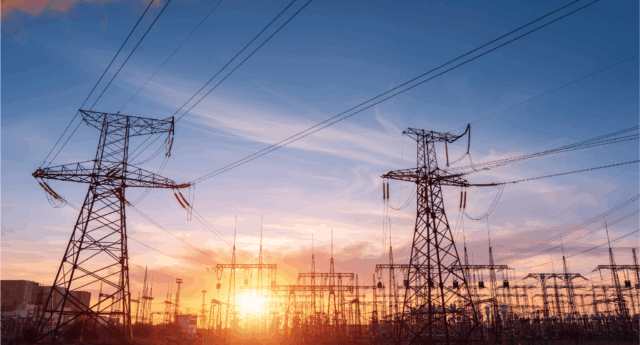Understanding energy data analytics
Businesses generate vast amounts of energy data every day — from meters, equipment, and building systems — but without proper analysis, this data is just noise.

Understanding energy data analytics
Businesses generate vast amounts of energy data every day — from meters, equipment, and building systems — but without proper analysis, this data is just noise. Energy data analytics turns raw numbers into actionable insights, helping organisations cut costs, reduce emissions, and make smarter decisions. Effective analytics in energy and utilities supports everything from daily operations to long-term sustainability strategies, providing a clearer understanding of consumption patterns and opportunities for improvement.
What is energy data analytics?
Energy analytics involves collecting, processing, and analysing data on energy consumption, production, and costs to gain deeper insights into how energy is used across an organisation. By applying analytics to this data, businesses can identify usage patterns and inefficiencies that might otherwise go unnoticed, such as equipment left running outside of operating hours or systems performing below expected efficiency levels.
Using energy and data analytics allows companies to:
- Identify usage patterns and inefficiencies.
- Predict energy demand and optimise equipment schedules.
- Verify energy savings from efficiency projects.
Energy analytics goes beyond simple spreadsheets — it uses advanced tools like energy analytics dashboards, predictive models, and data visualisation platforms to uncover opportunities invisible to the naked eye. Clear, accurate data forms the foundation of meaningful sustainability progress reporting , ensuring stakeholders see real, measurable results.
Benefits of energy data analytics
By turning data into actionable insights, businesses can unlock a range of benefits that improve financial performance, enhance sustainability, and strengthen competitiveness in an increasingly carbon-conscious marketplace.
Reduce energy costs by identifying waste
Energy analytics helps you spot inefficiencies like equipment running during downtime or systems consuming more energy than necessary, enabling swift corrective actions that can significantly lower energy bills.
Improve equipment maintenance with predictive insights
By analysing patterns in equipment performance and energy consumption, predictive analytics detects early signs of wear or faults, allowing you to schedule maintenance before breakdowns occur and avoid costly unplanned downtime.
Lower emissions by optimising processes
Analytics provides detailed visibility into how energy is used throughout operations, helping you streamline processes, eliminate unnecessary steps, and reduce carbon emissions without sacrificing productivity.
Strengthen compliance with environmental standards
With comprehensive data and automated reporting, analytics makes it easier to meet requirements for schemes like SECR or ISO 50001, ensuring you stay compliant with evolving environmental regulations and avoid potential penalties.
Enhance reputation with customers and investors
Demonstrating that your business uses advanced analytics to monitor and improve energy performance shows a commitment to sustainability, building trust with customers, partners, and investors who increasingly expect credible climate action.
Approaches in analytics for energy and utilities
Modern analytics tools offer a range of methods that provide deeper insights into how, when, and why energy is consumed. Each approach adds a unique layer of understanding, empowering businesses to act quickly, optimise operations, and reduce costs. Together, they enable proactive energy management instead of reactive problem-solving.
Descriptive analytics
Descriptive analytics focuses on summarising historical energy consumption data to help you understand what has happened over a given period and why. It highlights patterns such as recurring peaks, seasonal trends, and shifts in usage following equipment or process changes, giving businesses a baseline for future improvements.
Diagnostic analytics
Building on descriptive data, diagnostic analytics digs deeper to uncover the causes of unusual energy usage, such as sudden spikes or unexpected drops. By analysing contextual information like production schedules, occupancy levels, or equipment status, it helps identify root causes so corrective actions can be taken.
Predictive analytics
Predictive analytics uses historical energy data and advanced algorithms to forecast future consumption. This method enables businesses to anticipate energy needs based on variables like weather, production demands, or occupancy, helping to avoid costly peak charges and schedule equipment more efficiently.
Prescriptive analytics
Prescriptive analytics goes a step further by recommending specific actions for optimal performance. Based on past and real-time data, it suggests measures such as rescheduling energy-intensive tasks, adjusting equipment settings, or investing in efficiency upgrades, ensuring continuous improvement in energy performance.
Bringing analytics approaches together
By combining descriptive, diagnostic, predictive, and prescriptive analytics — and integrating tools such as energy analytics dashboards, energy analytics platforms, and advanced energy analytics tools — businesses gain a comprehensive toolkit for understanding energy use, identifying opportunities, and taking timely, effective action. This integrated approach supports smarter decision-making and faster responses to operational changes.
Energy analytics for renewable integration
Renewables add complexity to energy management due to their variable nature. Renewable energy analytics and data analytics for renewable energy help businesses:
- Forecast generation from on-site solar or wind.
- Match energy supply with demand for maximum savings.
- Balance loads to avoid reliance on costly backup power.
Effective use of data analytics in renewable energy supports better integration, greater self-consumption, and improved return on investment. Leveraging these tools also helps align with sustainability goals and supports energy and utility analytics strategies for decarbonisation.
Dashboards and visual tools
Analytics are only useful if you can interpret the results. Energy analytics dashboards and platforms transform data into clear, interactive charts and reports. They help stakeholders monitor performance at a glance, spot trends, and drill into details when needed.
Key features to look for include:
- Customisable views by site, asset, or time period.
- Alerts for abnormal consumption patterns.
- Automated reports for managers or external stakeholders.
These capabilities make it easier for businesses to act on insights from energy consumption analytics, energy usage analytics, and sustainable energy research analytics.
Using analytics to support reporting
Integrating insights from energy analytics provides a detailed, data-driven picture of your performance, giving stakeholders confidence that progress towards targets is real and measurable. These insights can highlight trends over time, compare different sites or departments, and show the impact of efficiency projects, turning reports into powerful stories of improvement.
Analytics platforms also make it easier to align your sustainability reports with recognised standards like GRI or CDP by producing data in the required formats, streamlining compliance efforts. Automated verification features can further validate data integrity, enhancing transparency and credibility with customers, investors, and regulators.
By using advanced analytics — including energy predictive analytics and energy software intelligence analytics — to support reporting, businesses not only save time and resources but also improve the quality of their communication around sustainability, building trust and strengthening their reputation.
Conclusion
Energy data analytics is no longer a nice-to-have — it’s an essential tool for competitive, sustainable businesses. By harnessing your data with comprehensive approaches spanning energy utility analytics, energy consumption analytics, and predictive tools, you can drive down costs, meet carbon targets, and gain a clearer picture of your operations.
Unlocking the full potential of your energy data is a smart investment in your organisation’s future.
-

Market Insights
Big Changes Ahead: TNUoS Charges from April 2026
From April 2026, the way businesses are charged for using the electricity transmission network will change significantly. These charges, known as Transmission Network Use of…
Find out more -

Business update
Birmingham Museums Trust Partners with Equity Energies
New contract delivers £182k savings and boosts sustainability efforts across the city’s leading cultural sites.
Find out more -

Business update
Carbon emission monitoring systems: How do they work?
For companies striving to meet regulatory requirements, sustainability goals, and Net Zero targets, a robust carbon emission monitoring system is no longer optional,it’s essential.
Find out more